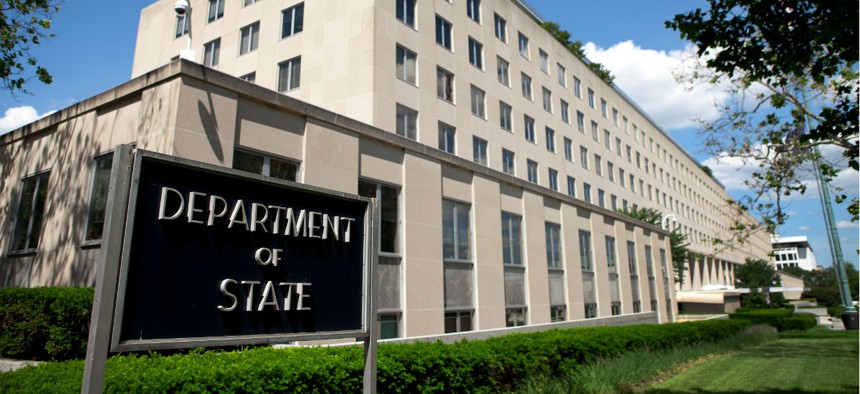State Department Clashed With USAID Over Redesign
Watchdog's postmortem suggests a lack of transparency and iffy data on program savings.
While the Trump administration continues to delay the promised release of last year’s agency-submitted reorganization plans, the inspector general for the U.S. Agency for International Development has offered a detailed portrait of how the “redesign” process unfolded at both USAID and the State Department.
USAID and State staffers clashed over a shared project that many employees felt lacked transparency and reliable data on promised savings, according to a recent letter the watchdog sent to three senators.
In response to spring 2017 governmentwide directives from the Trump White House and the Office of Management and Budget, then-Secretary of State Rex Tillerson’s team asked USAID officials to team up to “think big” with “no guardrails” on remaking org charts and programs to boost efficiency, the IG found. “But the lack of boundaries and explicit goals hindered progress,” according to some interviewed.
The two agencies last summer set up teams during a three-month consultation process that followed a controversial internal survey. They involved 100 USAID senior employees from 21 if its 24 components, with 10 working full-time. Of the 100, 48 percent were civil service, 29 Foreign Service, 7 percent political appointees and 5 percent contractors, the report said (the IG was unsure of the status of the remaining 11 percent). The State Department involved 200 employees.
“Members from the work streams at all levels stated that the [entity]—tasked to resolve disagreements within the work streams—rarely did so and was often unable to reach consensus on major issues such as the consolidation of [information technology] and management services, or how to divide humanitarian assistance and funding decisions between the State Department and USAID,” the IG found. “Even after some decisions were thought to have been made, USAID officials reported instances when the State Department would revisit the decisions, forcing USAID to defend what was already considered resolved.”
USAID submitted many proposals from a pre-Trump transformation project.
State’s team criticized many of the USAID-initiated proposals in such areas as humanitarian assistance, foreign policy and strategic international financing because State’s decisions regarding these areas had not been finalized. In the end, six of USAID’s 21 original plans were removed, said the report to Senate Appropriations Committee members Thad Cochran, R-Miss. (since retired); Patrick Leahy, D-Vt., and Lindsey Graham, R-S.C.
OMB, according to IG interviews at USAID conducted from November 2017 to March 2018, “instructed the agency to keep a close hold on the details of the redesign. While some mission directors noted that biweekly calls with bureau leadership, agency announcements, and direct outreach kept them informed of the redesign process as it occurred, field-based officials expressed dismay and disillusionment with what seemed to be a headquarters-focused process.”
The final product estimated $5 billion to $10 billion in potential savings over five years. “However, this amount did not factor the investment costs of $2.8 billion over that same period, which would result in net savings of $2.2 billion,” IG Ann Calvaresi Barr reported, quoting one senior USAID official as saying that the reported aspirational savings of $10 billion was not based on analysis, but rather “came out of nowhere.”
The data from the internal “listening” survey conducted by contractor Insigniam were made accessible only to five or six employees, according to the online blogger Diplopundit, in a May 7 commentary, and might be released only under a Freedom of Information Act request.
The future of the State and USAID redesigns is uncertain under newly installed Secretary of State Mike Pompeo, given that Congress largely rejected many of the cuts proposed by predecessor Tillerson and the White House.
NEXT STORY: Why Society Needs More Troublemakers








